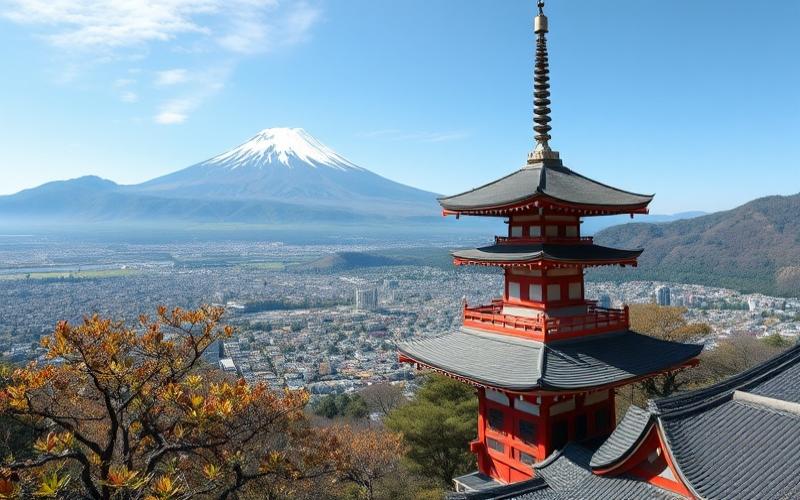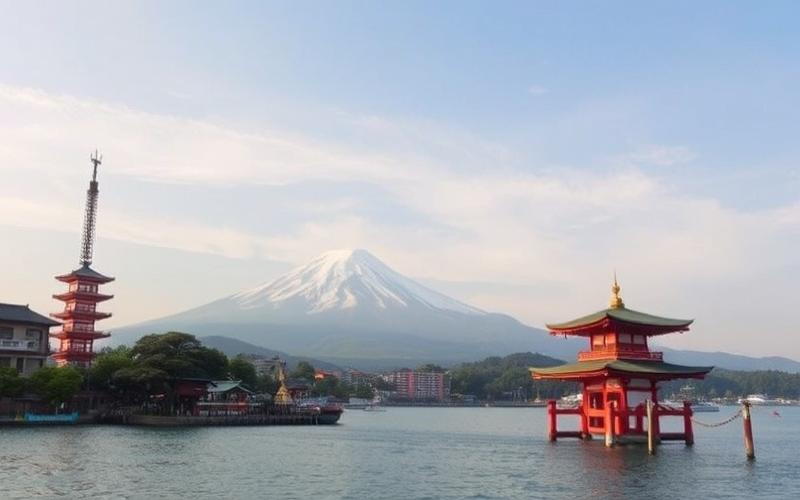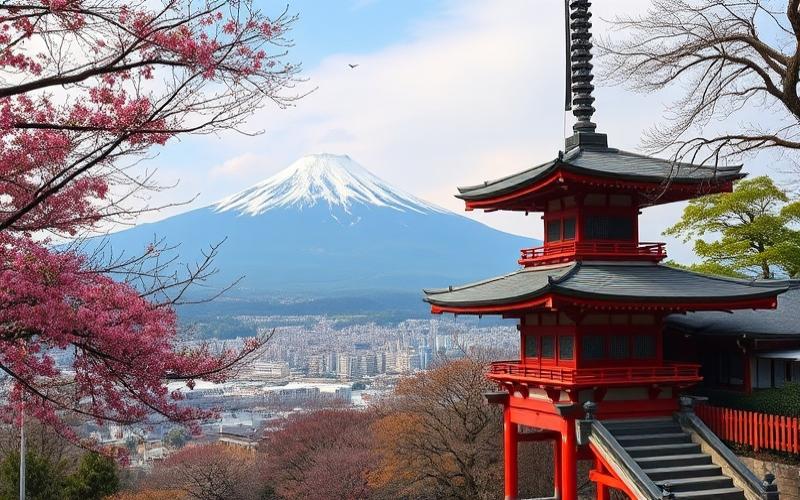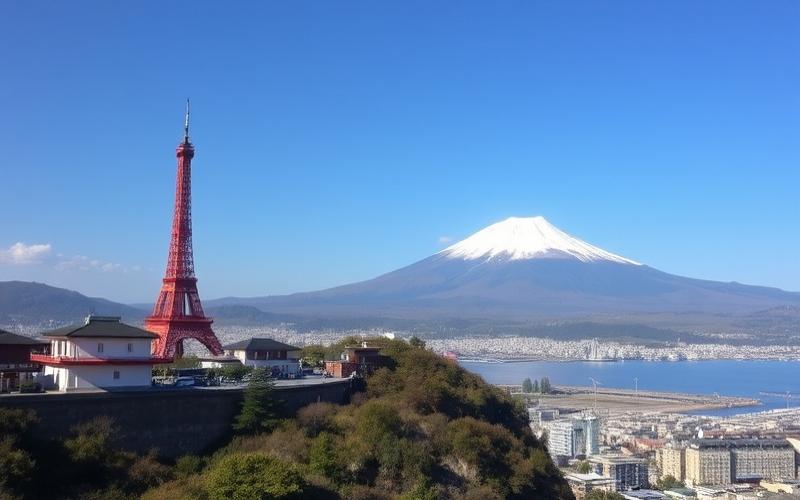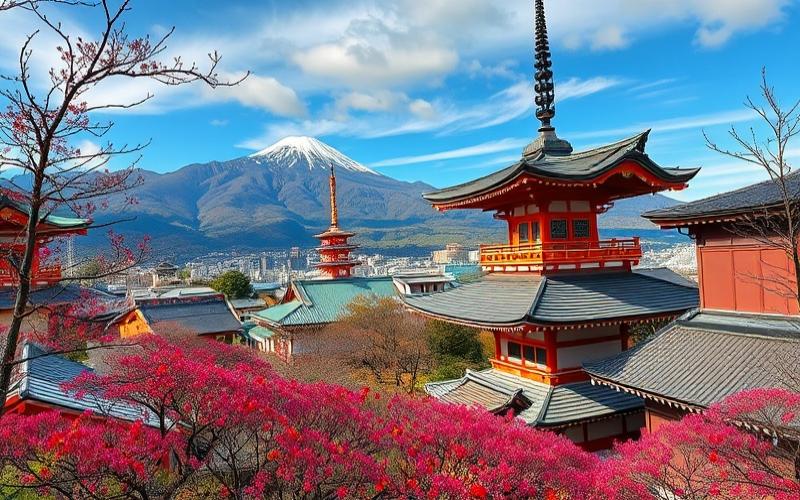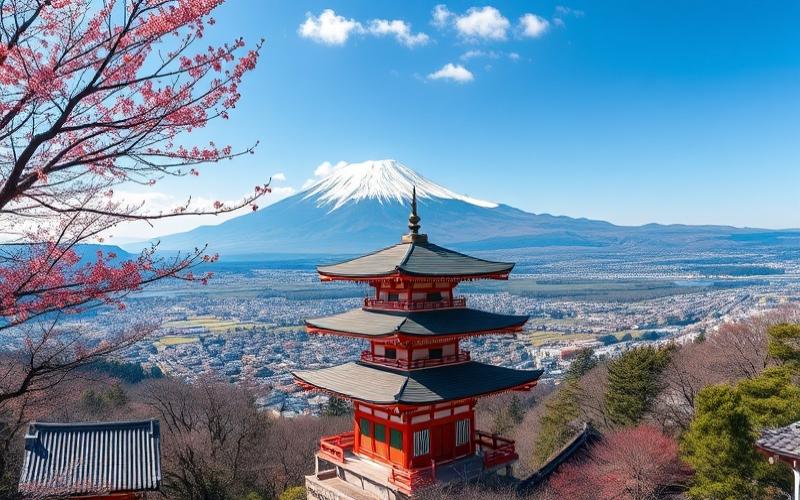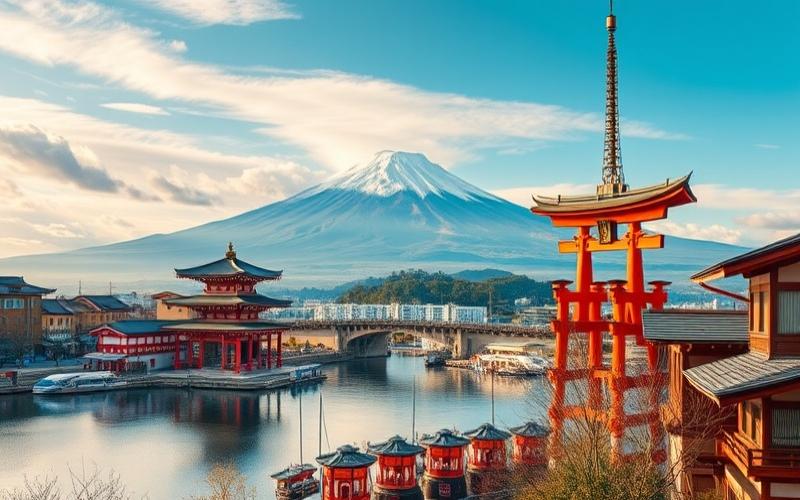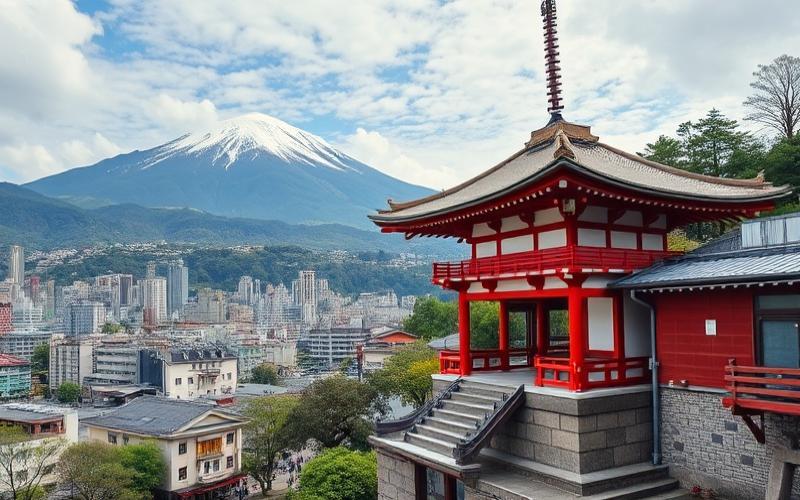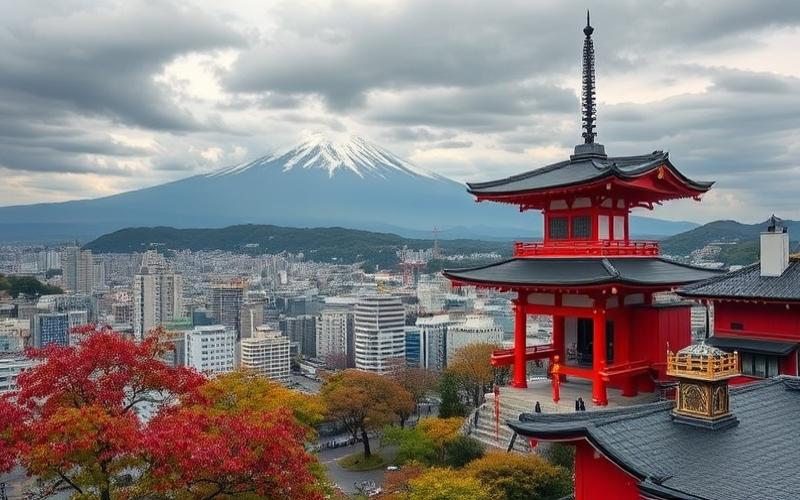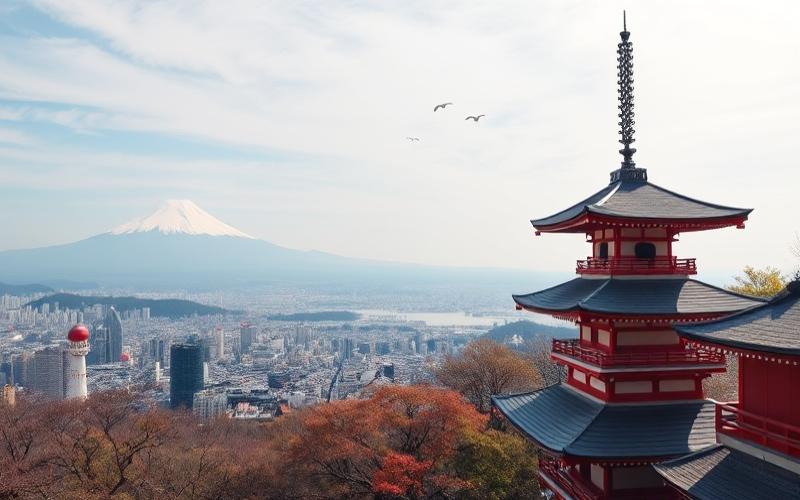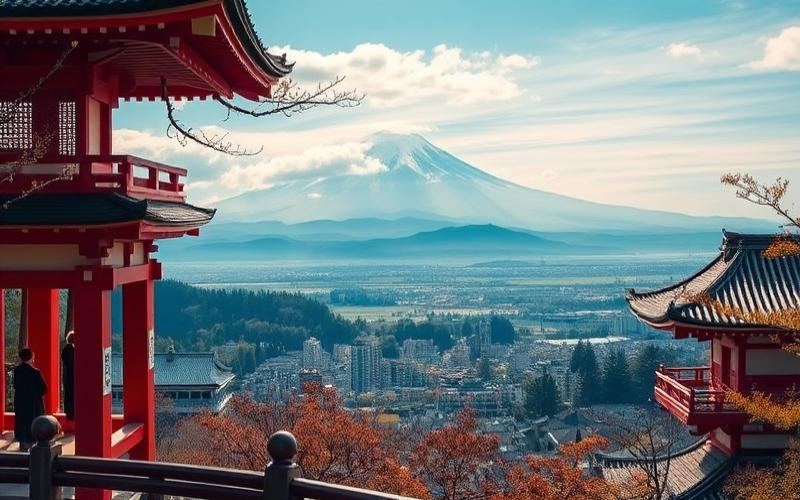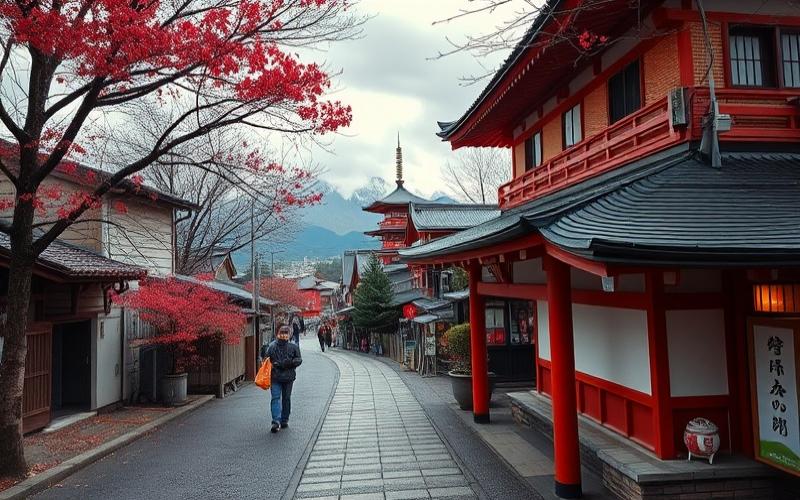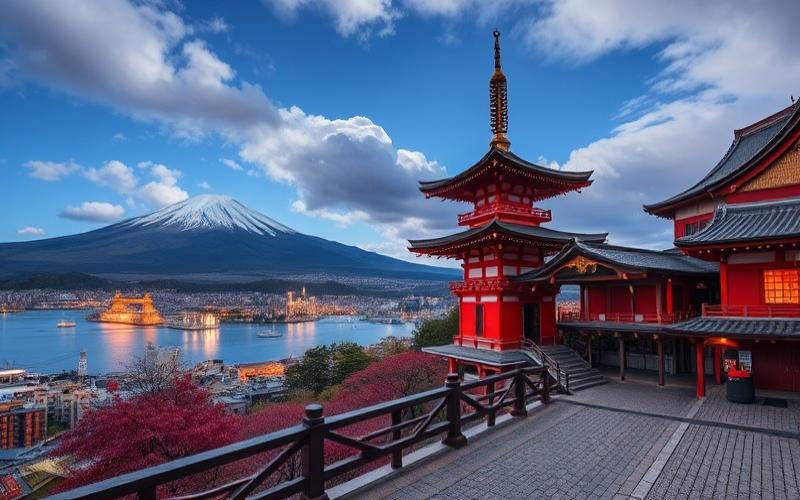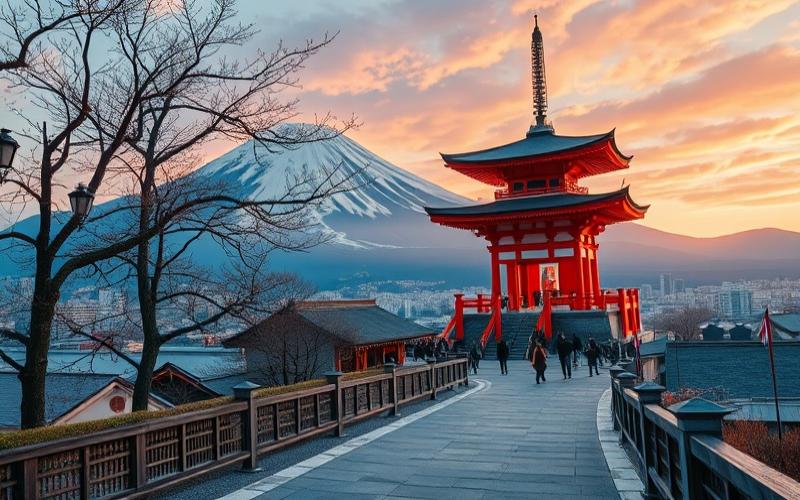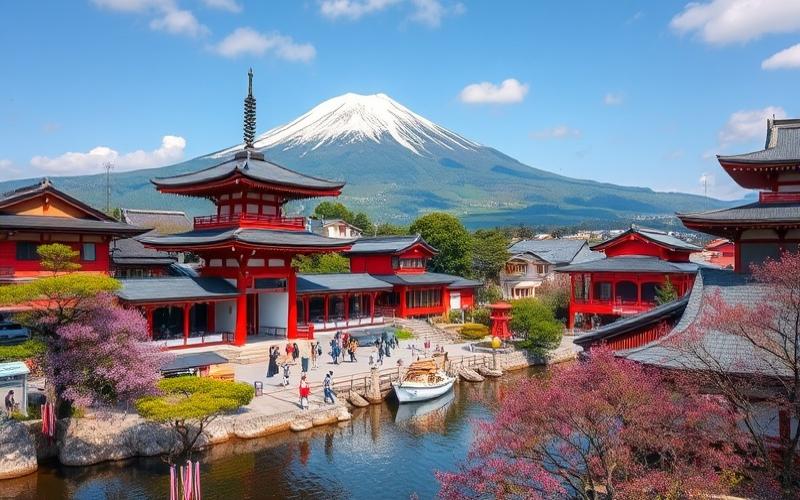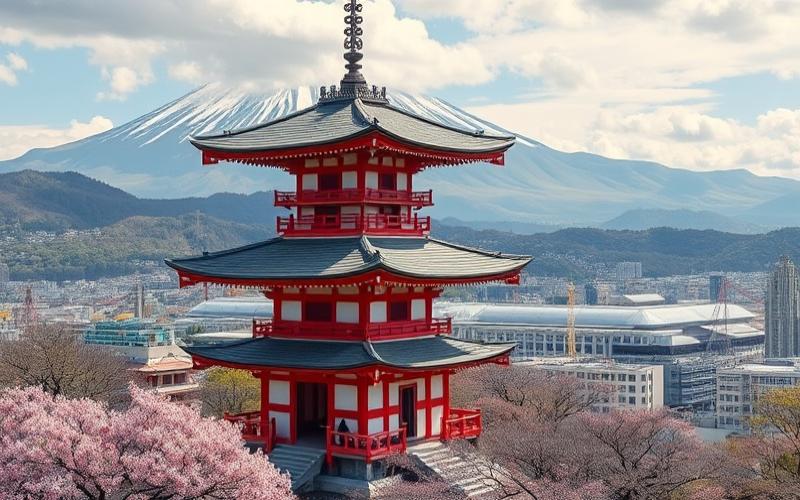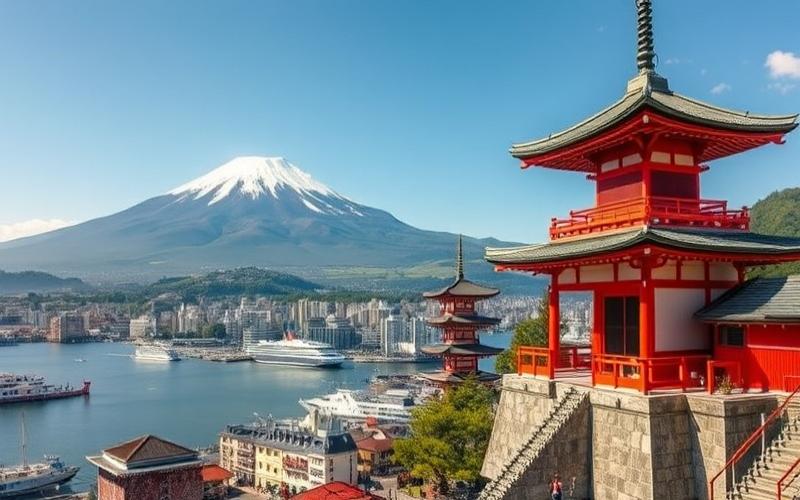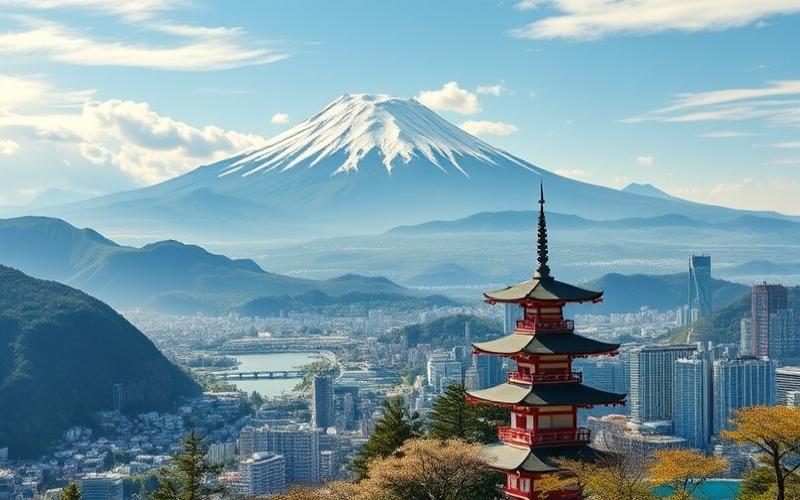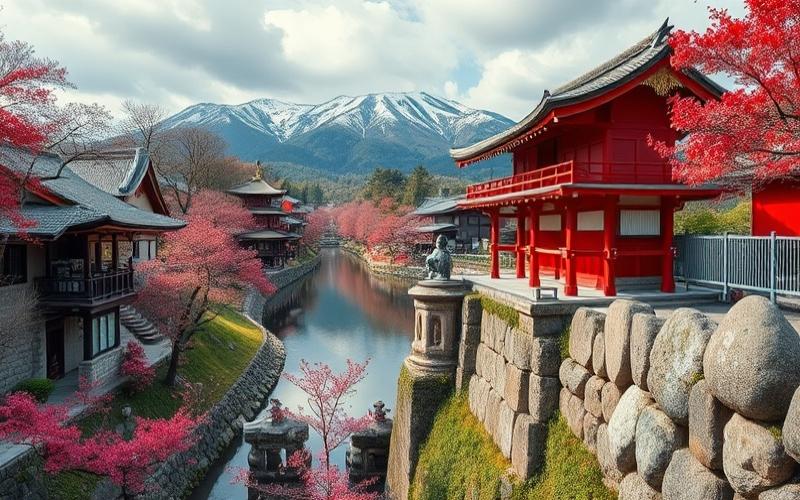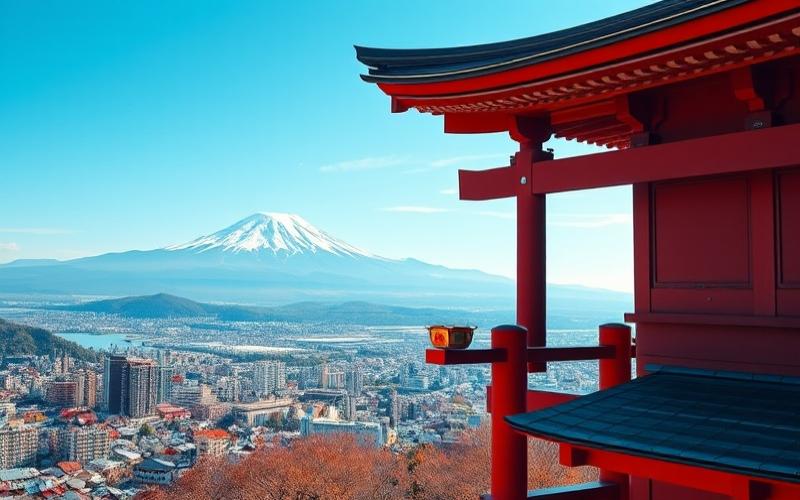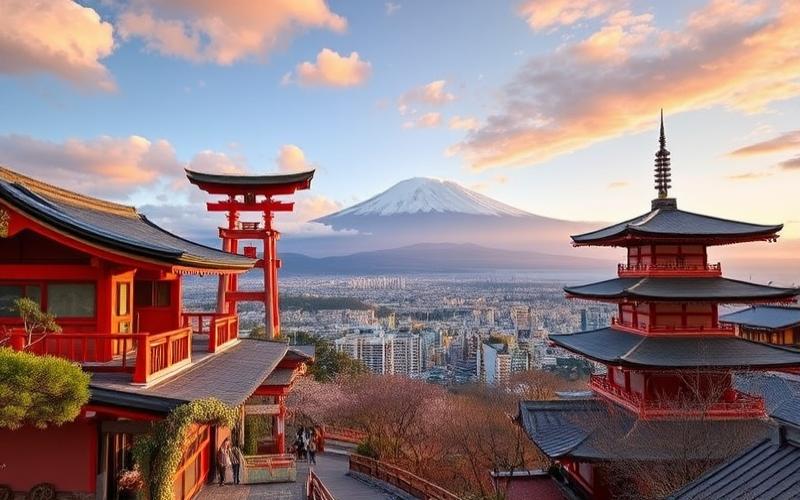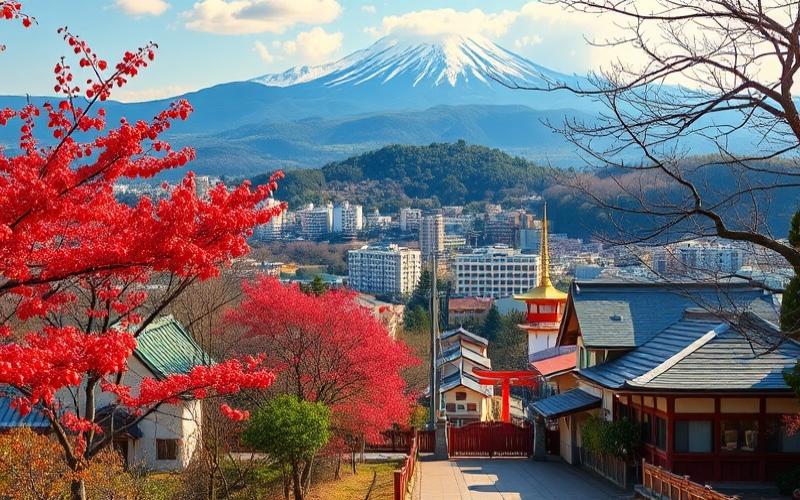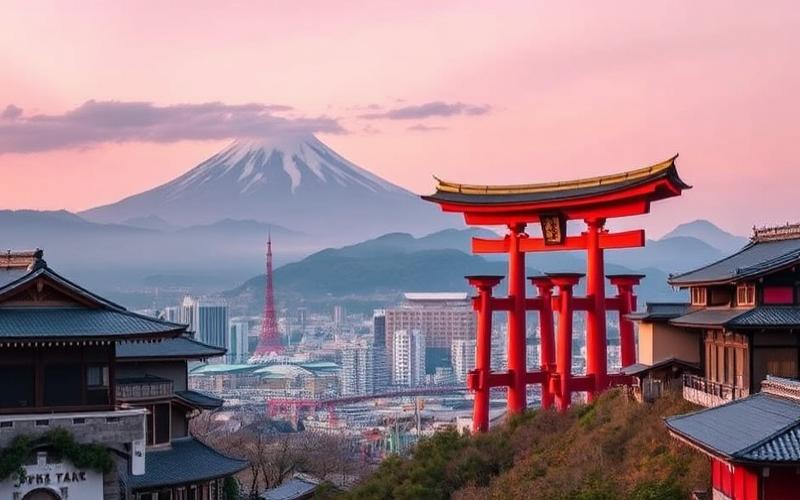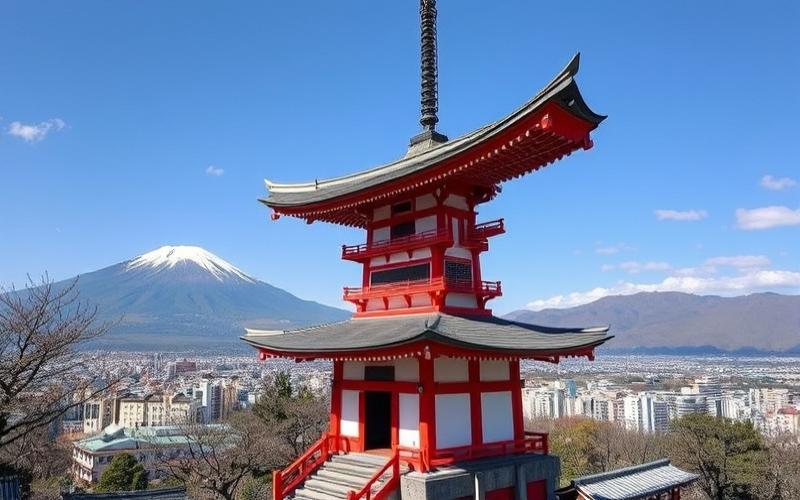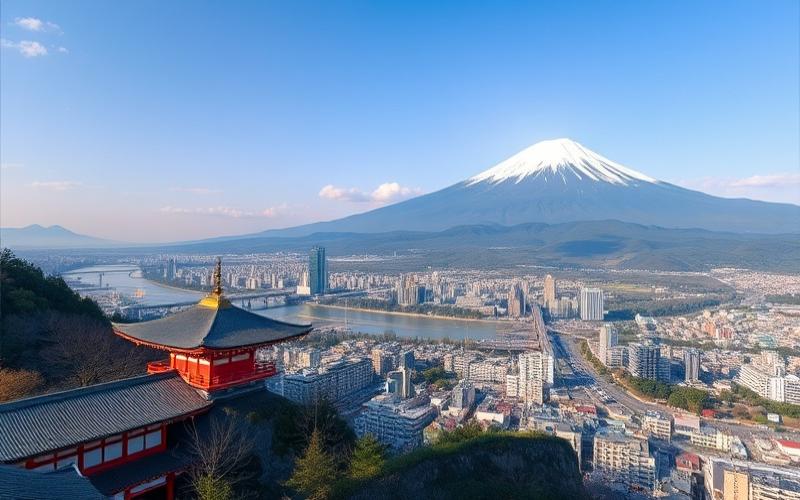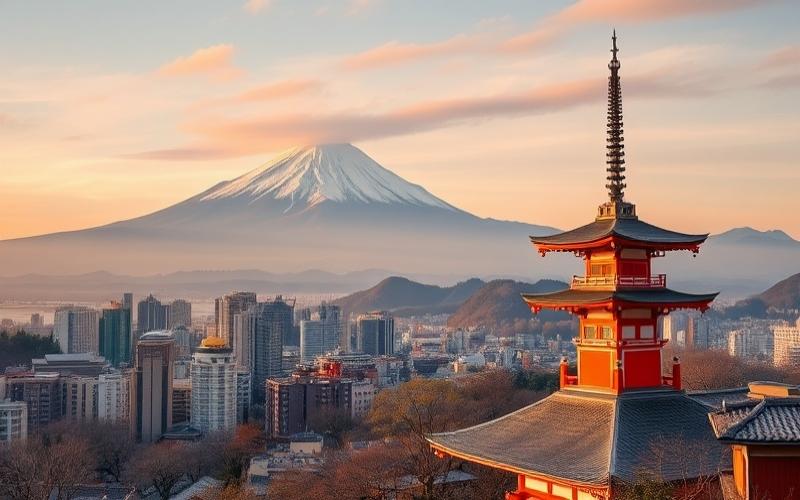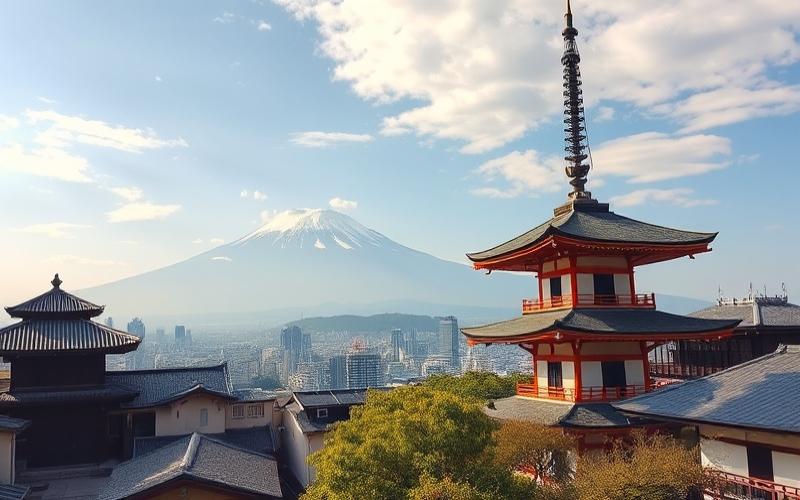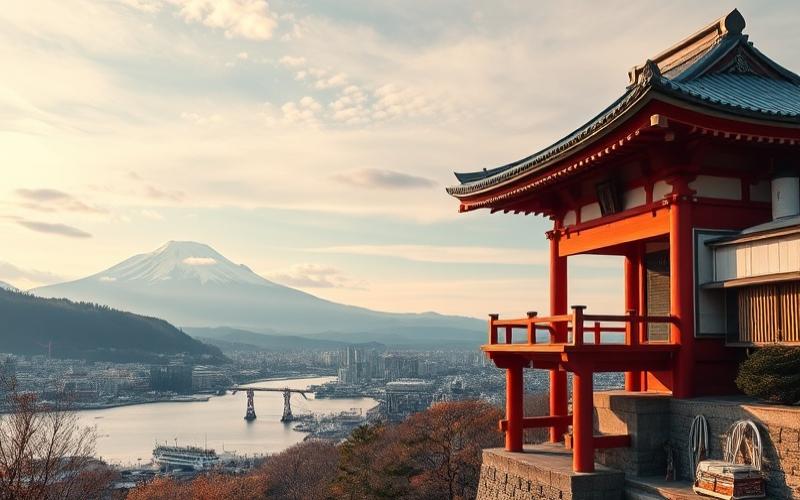
 Published on and written by Cyril Jarnias
Published on and written by Cyril Jarnias
In an ever-evolving global economic context, Japan’s commercial real estate market stands out with its unique dynamics and compelling investment opportunities. As the country navigates through demographic and economic challenges, demand for flexible and technologically advanced spaces continues to grow. Emerging trends, such as increased adoption of green technologies and integration of digital solutions, are profoundly reshaping the commercial landscape and attracting renewed interest from international investors. This article explores how these factors converge to shape the future of commercial real estate in Japan, offering an in-depth look at the adaptation strategies implemented by industry players to remain competitive in a globalized market.
Overview of Japan’s Commercial Real Estate Market Trends
Key Trends in Japan’s Commercial Real Estate Market
1. New Construction and City Comparison
In 2025, the supply of new commercial real estate properties is active in Japan, primarily centered around Tokyo, Osaka, and Nagoya.
- In Tokyo, large mixed-use buildings are planned in Minato-ku Shibaura, and vacancy rates remain at low levels (for example, less than 5% on average in Tokyo’s five central wards).
- In Osaka, despite massive supply of Class A office buildings planned from 2022 to 2027, occupancy rates are also high and rental levels are maintaining.
- In Nagoya, the planned opening of the Chuo Shinkansen high-speed rail line ensures stable demand for offices, with vacancy rates expected to fall to around 3%.
2. Government Policy and Market Impact
The government promotes urban redevelopment and infrastructure improvements to support market revitalization. Additionally, in terms of monetary policy, with the Bank of Japan’s lifting of negative interest rates and a slight rate increase, the market benefits from a stable capital flow environment.
However, there are regional disparities in real estate investment amounts, with growing interest from foreign investors in Osaka properties, highlighting a shift toward secondary cities.
3. Technological Innovation and Property Management
Adoption of real estate technology (PropTech), including:
- Smart locks
- Remote management (IoT)
- Virtual tours
- Electronic contract systems
Furthermore, new technological innovations such as AI-based price prediction models and 24/7 chatbots are also being observed.
4. Changing Tenant Demand
Since COVID-19, companies show increasing interest in hybrid office environments to attract talent. Conversely, for commercial facilities, a phenomenon of returning to downtown concentration and a wave of new mall openings continues. Tourism recovery is marked by increased foreign company entry into the hotel sector.
5. Economic Dynamics: Interest Rates, Inflation, and Major Industry Demand
Despite rising long-term interest rates (currently around 1.2%), real estate market sentiment is improving. Strong corporate earnings are driving increased demand for functional office spaces aimed at retaining talent, although oversupply of logistics facilities is concerning in some regions. However, the rental market is improving overall.
6. COVID-19 Aftermath and Recovery Status
Although the percentage of returns to the office has slowly recovered from its reduction during the pandemic, some sectors (including retail) continue to feel the impact of the rise in online services. Conversely, recovery of operations in tourist facilities such as hotels is notable.
From these elements, we can see the importance of proposing solutions to overcome challenges in Japan’s commercial real estate sector and developing timely growth strategies.
Good to Know:
Japan’s commercial real estate market is experiencing notable developments, with increased new construction, particularly in Tokyo, where modern skyscrapers attract multinational corporations. Government policies promote urban rehabilitation, stimulating the sector. The adoption of technologies, such as IoT systems for energy management, is gaining importance to meet growing demand for more sustainable spaces. Tenants prefer sites offering flexibility and accessibility, pushing some to opt for co-working spaces. The Japanese economy, facing low interest rates and modest inflation, sees the pace of post-COVID-19 recovery varying between Tokyo, which shows signs of resilience, and Osaka or Nagoya, where activity remains more moderate. Sectors like tech and finance are driving demand, contributing to rising rents. According to recent projections, market stabilization could intensify by 2025, supported by economic stimulus policies.
Office Price Evolution in Major Cities
Observing office price trends in major Japanese cities, significant fluctuations have been observed in recent years due to the impact of the novel coronavirus and economic factors. Below, we will discuss price fluctuations and factors in the Tokyo, Osaka, and Yokohama markets.
1. Tokyo
Office rents in Tokyo’s five central wards (Chiyoda, Chuo, Minato, Shinjuku, Shibuya) temporarily declined after 2020 but are now on a recovery path. In February 2025, the average rent is 20,481 yen per tsubo, representing a 3.56% increase compared to the same month the previous year. Additionally, vacancy rates are also improving and currently stand at 3.94%.
This recovery is attributed to economic reopening and improved corporate performance. However, with continued massive supply, intensified competition between certain areas is also expected.
2. Osaka
In Osaka, rising vacancy rates and declining rents persisted from 2020 to 2022, affected by the novel coronavirus and massive supply. However, since 2023, the market has gradually begun to recover. According to the latest data, in Osaka’s six main districts, the average rent is 12,230 yen/tsubo (slight increase compared to the previous year) and the vacancy rate is 3.75%.
This stabilization is influenced by expanding demand, particularly from technology-related companies, and by local government support policies.
3. Yokohama
In Yokohama, interest in the office market has also increased in recent years. Development projects are underway, primarily in the Minato Mirai 21 and Kannai districts, but temporary increases in vacancy rates are at risk due to new supply increases. However, contract rents are currently holding firm, and trends of expanding demand, including improved facilities in certain areas, are being observed.
Key Fluctuation Factors
- Economic and Policy Factors: Many regional revitalization policies have advanced to recover from the novel coronavirus aftermath.
- Technological Innovation: Workstyle reforms accompanying telework diffusion—adoption of hybrid models—are causing a transformation of needs toward more flexible office use.
- Domestic and International Demand: Maintaining high appetite from financial sector investors and expected acceleration of international inbound flows.
The possibility of decreased international competitiveness or market saturation remain challenges. However, it’s important to focus on implementing strategic plans to maintain location appeal long-term.
Good to Know:
In major Japanese cities such as Tokyo, Osaka, and Yokohama, office prices have experienced marked variations in recent years. In Tokyo, prices have increased by 3.5% due to strong internationalized demand, particularly from financial and technology sectors. Osaka shows more moderate growth of 2%, influenced by growing local economic dynamism. In Yokohama, a 1.2% increase is observed, marked by increasing market saturation. Economic factors like low interest rates and favorable fiscal policies, as well as technological advancements, play crucial roles in these variations. The market must face international competition and saturation challenges. For the future, analysts project price stabilization thanks to new urbanization projects and strengthened domestic and regional demand.
Strategies Adopted by Companies Facing Market Dynamics
Strategies adopted by Japanese companies in the commercial real estate market are strongly influenced by factors such as economic fluctuations, demographic changes, and technological evolution. Let’s analyze their specific content.
1. Response to Economic Fluctuations
In Japan, while interest rate increases are expected until 2025, real estate prices and rents are maintaining stable levels. In the office sector particularly, the share of investments is increasing and many new properties are available. In this context, many companies seek to improve profitability by increasing rents and reducing vacancy rates.
As competition between investors intensifies, Japanese companies are actively developing value creation strategies through upgrading older buildings or changing usage purposes.
2. Demographic Structure and Changing Demand
With the baby boom generation becoming elderly, investment opportunities in senior facilities and redevelopment projects are expanding. Conversely, in regional areas, downward pressure on prices due to oversupply is observed.
In urban areas, demand for housing for young people and that for high-end housing by wealthy foreigners remains strong, and we’re witnessing the development of new housing forms such as shared houses or design apartments.
3. Technological Innovation and Sustainability
The adoption of advanced technologies such as AI, IoT, and blockchain to improve operational efficiency and digital transformation of real estate management is becoming widespread across the entire market. Adoption of sustainable buildings is also being encouraged.
For example, Obayashi Corporation is also focusing on projects suited to new technologies, such as increasing demand for data center construction, and aims to gain competitive advantage in this field.
Success Examples and Trends
In the Minato area (Roppongi, Akasaka, Azabu), integrated urban redevelopment projects like the Toranomon-Azabudai project have contributed to improving area value. In Shibuya ward, there’s a trend of massive investment in flexible offices as location centers for IT startups. This ability to flexibly adapt to regional characteristics can be considered a trend.
Relationship with Government Regulation
Thanks to government policies promoting facility investments, measures for older buildings, and public subsidy systems, many real estate operators benefit from support. However, they also feel the constraint of applying certain strict regulations, such as strengthened environmental standards.
Short-term challenges remain, such as reducing office vacancy rates and resolving succession problems in regions. Medium to long-term, increases in eco-friendly urban projects can be expected.
Good to Know:
Facing dynamics in Japan’s commercial real estate market, companies are adopting various strategies to remain competitive. Economic fluctuations have prompted some players, like Mitsubishi Estate, to diversify their portfolios by including mixed-use spaces combining offices, residences, and leisure to meet fluctuating demand. Demographic changes, particularly population aging, are encouraging others, such as Sumitomo Realty & Development, to invest more in senior-friendly complexes. With the advent of technologies, Mori Building integrates smart building solutions to improve energy efficiency, while strict government regulation pushes companies to prioritize environmental sustainability in their projects. According to a Mitsui Fudosan executive, this transition toward eco-friendly practices is not only necessary but also beneficial long-term, and projections indicate that focus on technological innovation and sustainability will intensify in coming years.
Impact of International Trends on Japan’s Real Estate Sector
Key International Trends Influencing Japan’s Commercial Real Estate Market
1. Impact of Global Economic Policies and Interest Rates
Global monetary policies have a direct impact on Japan’s commercial real estate market. For example, interest rate cuts by the U.S. Federal Reserve (FRB) and policy changes by the European Central Bank (ECB) promote capital movements, thereby increasing investment flows toward Japan. On the other hand, interest rate hikes by the Bank of Japan have complex impacts on domestic and international investor appetite.
In a high interest rate environment, real estate loans and construction costs increase, but growing interest in real estate investment as an inflation hedge is also observed.
2. Cross-Border Capital Movements
Due to geopolitical risks and supply chain reorganization, many foreign companies and institutional investors are strengthening their entry into the Japanese market. Massive foreign investments are particularly notable in semiconductor-related facility development projects and data centers.
Additionally, capital redirected from Asian countries like China is flowing into the Japanese market, often chosen for its stable legal system and transparent transaction environment.
3. PropTech and Technological Innovation
In the PropTech (real estate technology) field, technologies like AI, IoT, and big data analytics are being used, leading to improved real estate management efficiency, cost reduction, and construction of new revenue models. These technological innovations are deploying rapidly globally, with adoption examples in Japan, such as smart office building projects.
A concrete example is an office building project in Osaka equipped with an AI-driven air conditioning management system. Such initiatives contribute not only to improved energy efficiency but also to increased competitiveness.
Comparison Between Japanese Market and Other Asian Countries
The Japanese market has an advantage in terms of stability and transparency compared to other Asian countries. However, it faces the long-term challenge of an aging society, which poses problems for creating new demand. Conversely, countries like China and Singapore, while showing high economic growth rates, face challenges related to market volatility and geopolitical risks.
Foreign direct investment (FDI) continues to expand, with positive effects expected particularly in the hotel sector and logistics infrastructure.
Attractiveness for Foreign Investors
Under the yen depreciation trend, the effect of reduced real estate purchase costs is encouraging more foreign players to enter the market, but there are also concerns about possible short-term capital outflows depending on how this situation evolves.
Considering these factors, the importance of developing strategies to maintain competitiveness is becoming an urgent necessity.
Good to Know:
Japan’s commercial real estate market is influenced by several international trends, including global economic policies and interest rates that directly affect investment strategies. International interest rate reductions have intensified foreign capital flows toward Japan, making it more attractive to investors compared to other Asian markets. Additionally, rapid adoption of innovative technologies like PropTech has enabled more efficient management of commercial properties, thereby redefining Japan’s competitiveness on the global stage. For example, real estate projects in Tokyo incorporating PropTech solutions have not only optimized operations but also attracted considerable investment from foreign firms seeking modern infrastructure. These dynamics reinforce Japan’s integration into the global market, although they require continuous adaptation to maintain competitiveness against countries like China and South Korea.
Disclaimer: The information provided on this website is for informational purposes only and does not constitute financial, legal, or professional advice. We encourage you to consult qualified experts before making any investment, real estate, or expatriation decisions. Although we strive to maintain up-to-date and accurate information, we do not guarantee the completeness, accuracy, or timeliness of the proposed content. As investment and expatriation involve risks, we disclaim any liability for potential losses or damages arising from the use of this site. Your use of this site confirms your acceptance of these terms and your understanding of the associated risks.

